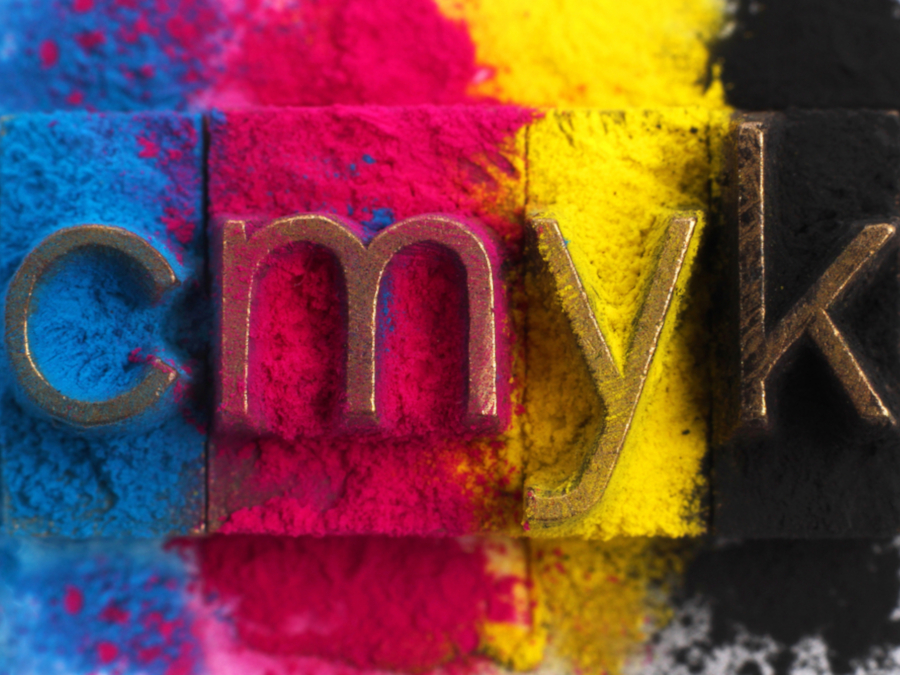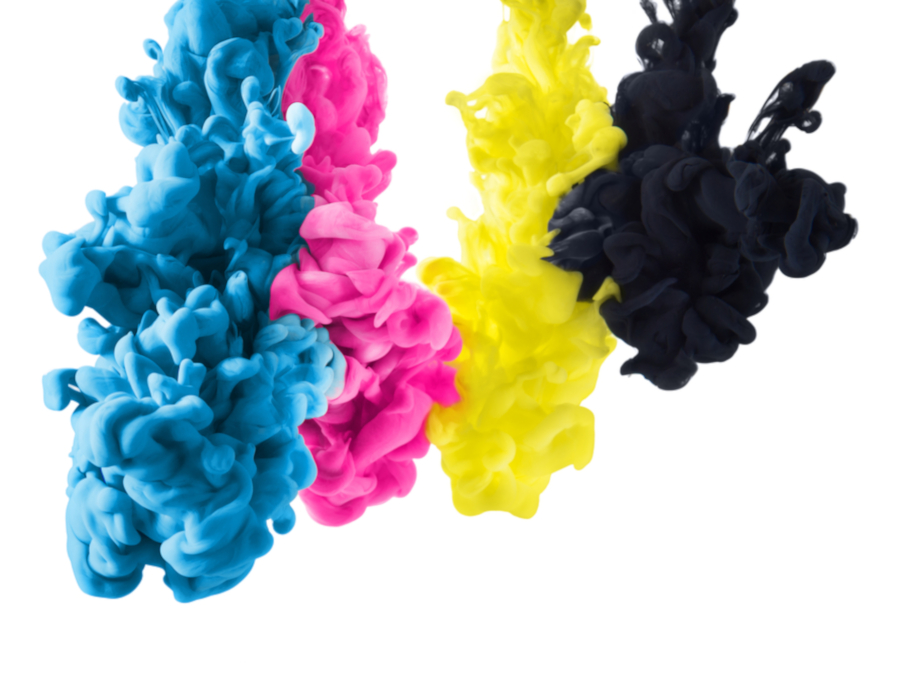When submitting a job to a professional printer, you’ll be asked to supply your artwork in CMYK.
But what is CMYK printing? And why does it matter? Our guide answers the following questions:
- What is CMYK?
- How does CMYK work?
- What are the differences between CMYK and RGB?
- Why is CMYK printing better than RGB
What is CMYK?
CMYK is a term used by printing companies, publishers, artists and graphic designers. The colour standard for professional printing – it’s used to create magazines, newspapers, business cards, flyers and pretty much all other printed materials.
It is an acronym of the four colours used in printing, with each letter standing for one colour.
C: Cyan
M: Magenta
Y: Yellow
K: Black
Black’s abbreviation is K, which stands for Key. When the other three colours are aligned, they mix to create a black plate, or keyline.
You’ll see the four coloured dots on the side of your newspaper in a vertical line.
How does CMYK work?
When printing on a blank white background, CMYK reduces the light usually seen by a lighter colour – masking it with ink. It’s known as a subtractive model, as these inks take the red, green and blue colours from white.
This results in:
- White – Red = Cyan
- White – Green = Magenta
- White – Blue = Yellow
The process of printing with CMYK works, in part, through halftoning.
What is halftoning?
Halftoning is a graphics technique which uses dots to create a gradient-like effect when printing colour. This allows less than the full saturation of primary colours.
When applied to CMYK printing, halftoning replicates these tiny dots of colour and prints them in a pattern small enough to appear solid to the human eye.
Different percentages of halftone produce different colours. For example, magenta with a 20% halftone produces pink, because the little dots on the white background seem lighter and less saturated than pure, bright magenta ink.
Halftoning is frequently used for colour printing, as any shade or tone can be replicated by changing the density of the four colours that make up CMYK.
Confused by the dots? Learn more about printing and image resolution
Why is black known as the ‘key’ colour?
There are several reasons for black being the ‘key’ colour in the CMYK palette.
Black…
- Plays an important role in the print process and serves as an outline and colour indicator
- Enables the designer to print text with fine details, without blurring
- Absorbs more light to create much darker tones than a combination of cyan, magenta and yellow
- Is less expensive than the corresponding amounts of other inks
It’s also essential to preventing the paper being soaked with ink, as printing with only cyan, magenta and yellow would make the drying process slow and impractical – this can also cause the ink to bleed.
What are the differences between CMYK and RGB?
There are significant differences between the CMYK and RGB colour palettes. While CMYK is the gold-standard for print, RGB is the choice for colours used on computer displays. Other main differences are outline below.
CMYK
CMYK uses a subtractive process to create colours. The canvas starts as plain white, before colours are layered on to block out part of the spectrum. The ink reduces the light that would otherwise be reflected.
It’s known as subtractive because the inks subtract brightness from the white background.
RGB colours use an additive process. They take a black canvas and layer colours on top to create the final image.
RGB
RGB uses a colour management system that mixes shades of red, green and blue to develop colour images. Artwork designed in RGB may be altered when converted to CMYK for print.
While converting colours from one palette to the other is possible using Adobe Photoshop, there is no simple method for doing so.
Therefore, colours are likely to change when a creation goes to print, after it has been converted from RGB to CMYK.
For those who don’t want to risk colours appearing differently, we recommend designing in CMYK from the start.
Why is CMYK printing better than RGB
Even though RGB has a larger colour spectrum, making it easier to replicate fluorescent and neon colours, CMYK is the preferred choice for designers and printers because of its ability to replicate colours as the original artwork intended.
CMYK is also chosen by professional printers because it achieves the best results. Colours are crisper and images more vivid as they are intended for a white canvas. Most card and paper stocks begin life as white.
Ready to supply your artwork?
Find out more about setting up your files for CMYK and other things you need to do before submitting your artwork for print at our page on supplying your artwork.
Ready to print?
From business cards to flyers and leaflets you can find everything you need at Solopress.






thanks